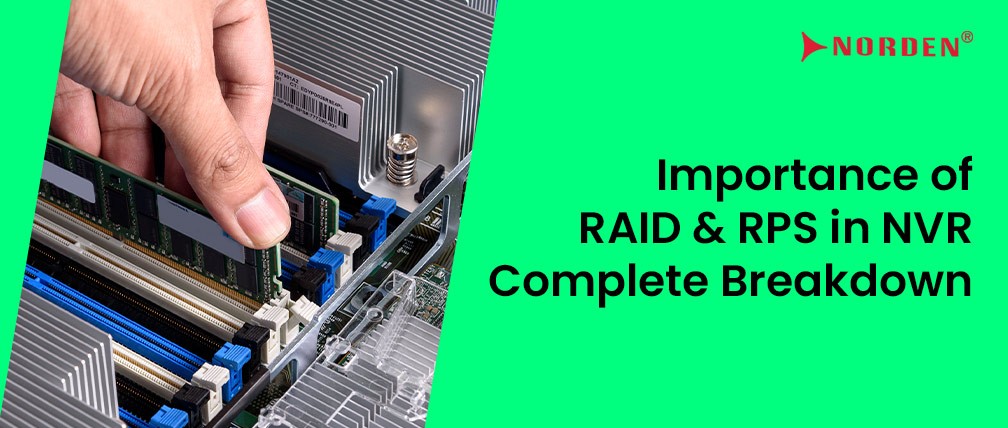Fill out your details and our executive will get in touch with you soon.







































































































































Network Video Recorders or NVR are equipped enough to store surveillance footage all by themselves but depending solely on NVR can put the organization in an inherent risk of data loss. Technologies have developed enough to overcome such risk and RAID is the answer to just that. Redundant array of independent drives or disks or RAID is an extensive array of independent disks which help in the storage of data which is done by sharing in between the disks. RAID storage can be utilised to store all necessary video footage without danger of losing the data. The RAID can be available in two forms; either in software or in hardware form.
In order to support the data storage, RAID gives its users different levels of storage access. The levels have been further defined as standard, nested and non-RAID levels.
Lets us look into most common raid storage levels opted exclusively for NVR:
The raid level that you choose for your NVR certainly will depend on the usage and requirement. If you deal with recorded data that is highly important, then it might require you to go for RAID levels which offer you the best configuration. If your data is not that important then a single drive would suffice your need. Using RAID for your NVRs is a plausible option as it is a collection of low-cost drives. Therefore, using RAIDS are highly recommended with users with highly sensitive and information of prime importance. The essential backup with the help of RAID is necessary for the seamless running of your entity.



















670e36be8e61d.png)